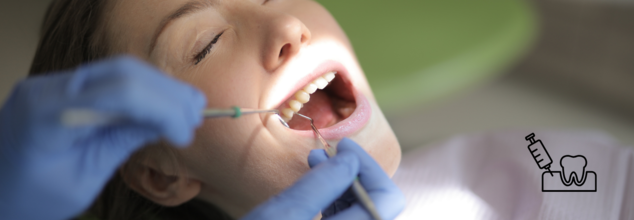- Health Conditions A-Z
- Health & Wellness
- Nutrition
- Fitness
- Health News
- Ayurveda
- Videos
- Medicine A-Z
- Parenting
- Web Stories
A Common Medication That Leaves You Trapped 'In Your Own Half-Alive Corpse' Condition

Credits: Canva
Imagine applying a cream to soothe your itchy, irritated skin, only to later find yourself bedridden, burning from the inside out, with no end in sight. This is the haunting reality of Topical Steroid Withdrawal (TSW), a devastating condition that some people develop after stopping common steroid creams used to treat eczema and other skin conditions.
Topical corticosteroids are widely prescribed. They’re found in medicine cabinets around the world and are often recommended by doctors as a first line of defense against inflammation. But for some, particularly those who’ve used them for years, the consequences of withdrawal are nothing short of horrifying.
“Like Pouring Boiling Water Over My Skin”
Kelly Barta, reports The New York Post, was just 38 when she decided to stop using the topical steroid creams she had relied on since childhood. Diagnosed with eczema as a young girl, she began using hydrocortisone and gradually moved to stronger prescriptions as her condition worsened.
By adulthood, Barta was using one of the most potent steroid creams on the market.
“When I quit, it felt like someone poured boiling water over my whole body,” she recalled. Her entire body turned red and itchy. She couldn’t sleep. The burning sensation never stopped—for five long years.
Her life unraveled. She lost her job, her marriage, her hair, and nearly her life. “You’re imprisoned in this body with unrelenting pain,” she said. “Don’t try to get to tomorrow—just survive the next hour.”
Her case is not unique.
According to the International Topical Steroid Awareness Network (ITSAN), TSW can leave sufferers housebound or bedridden for months or years. Symptoms include extreme redness, relentless itching, nerve pain, and “oozing” skin. Many describe it as being “trapped in your own half-alive corpse.”
Misunderstood and Misdiagnosed
Though eczema affects around 31 million Americans, most are unaware of TSW. Doctors, too, often misdiagnose the condition as a worsening of eczema, and the standard recommendation is more steroids—further fueling the cycle.
“I was getting to the point where I’d reach into my purse and come out with hives,” Barta said. Her general practitioner dismissed her concerns, suggesting lifelong steroid use. But a pharmacy technician warned her she might be overusing the medication.
No one had ever explained that long-term use could make her skin thinner, more reactive, and vulnerable to new allergies. Barta’s own research revealed the disturbing truth—that what was supposed to help her had actually been harming her.
A Shared Battle
Jada Jones, now 23, tells the Post that she was also diagnosed with eczema as a child. When a dermatologist prescribed her mid-strength steroids, her skin improved quickly. Encouraged, she continued using them on and off—until high school stress triggered a flare-up.
Jones asked her doctor about TSW, but was reassured it wasn’t a risk. Instead, she was bumped up to the strongest Class 1 steroids.
Her condition worsened in 2022 while pursuing a creative career in Los Angeles. “It looked like purplish bruising. Not eczema,” she said. A scheduled photo shoot had to be abandoned midway. “I was bedridden from that day on for the next four months.”
Her body was on fire, her skin cracked, and pain consumed every waking moment. “They’re looking at you like you’re damn near a burn victim,” she said of her baffled doctors.
Healing in Unconventional Places
With traditional medicine offering little support, Jones took matters into her own hands. She moved to Tulum, Mexico, to try healing saltwater and later traveled to Thailand for Cold Atmospheric Plasma (CAP) therapy—a lesser-known treatment that has shown promise for TSW.
While she still battles symptoms, her condition has improved. Today, she manages her skin using infrared and red-light therapy.
“My skin has very mild eczema symptoms now,” she said. “I’d rather tolerate this for the rest of my life than ever go through that again.”
The Medical Mystery of TSW
Despite its severity, Topical Steroid Withdrawal Syndrome remains under-researched and poorly understood. There is no official diagnostic criteria, no universally accepted treatment, and many doctors still dispute its existence.
Patients are left to advocate for themselves, rely on online support groups, and explore alternative treatments. ITSAN continues to push for awareness and research funding.
Both Barta and Jones believe education is key. Steroids can help—but only if used sparingly and for short periods. “You think you’re getting help,” Barta said, “but then you end up 100 times worse than you were before.”
World Brain Day 2025: Could Your Brain Heal Itself? Why Scientists Are Betting On Neuroplasticity To Treat Neurological Disorders

Credits: Health and me
There's a remarkable change taking place within your brain every single day and chances are, you don't even realize it. Every time you overcome a bad habit, acquire a new skill, or have a new idea, your brain remaps itself. This isn't poetic, it's science and it is called neuroplasticity.
For decades, scientists thought the adult brain was static, hardwired after childhood but over the last few decades, that's been completely rewritten by futuristic science. Today we know that the brain is dynamic, a changing entity that continues to adapt throughout life. Whether you're healing from trauma, creating new habits, or attempting to hone focus, your brain has the capacity to change—structurally and functionally.
What makes it even more intriguing is the way all this occurs unseen, as if a sculptor is working quietly, remolding clay with every experience, feeling, and deed. Neurons are reconfigured, synapses grow or dissolve. Large areas of the brain expand or contract based upon usage.
You're not tied to the brain you were born with. Neuroplasticity is possibility, and opening it up doesn't involve miracle tablets—it takes regular, conscious effort. From mindfulness exercises to movement and mindset changes, tiny habits can result in huge rewiring. Let's see how it works—and what it might do for your mental health.
What Is Neuroplasticity?
Neuroplasticity is the brain's capacity to reorganize its structure and function as a result of learning, experience, or injury. It's a process by which new connections are created among neurons or the existing ones are stabilized, enabling the brain to change. Says Dr. Prajwal Rao, Professor and Head of Neurology at Pune's Dr. D.Y. Patil Medical College, "Neuroplasticity is the brain's built-in mechanism for recovery.". It's how the nervous system adapts, compensates, and—even when injured—develops new ways of working."
This concept has transformed the treatment of injury to the central nervous system (CNS), consisting of the brain and spinal cord. Following a traumatic brain injury (TBI) or spinal cord injury (SCI), rehabilitation efforts now center upon retraining the brain through neuroplastic principles.
What is The Common Thread Between Birth Injury to Neurodegeneration?
On the surface, cerebral palsy and Parkinson's disease seem worlds apart. One is a motor disorder due to brain damage in utero or in the first moments after birth; the other is an otherwise healthy neurological disease that typically happens later in life. But both have damaged brain circuits—and that's where neuroplasticity comes in.
As Dr Rao explains, "Cerebral palsy, usually resulting from brain damage at birth, and Parkinson's disease, an incurable condition that degrades brain cells responsible for movement, are worlds apart. But both have something in common: both are the result of damage to brain circuits. And that's where neuroplasticity becomes relevant.".
The brain's neural network is able to create new paths or reinforce old ones, particularly when they are stimulated by activity, learning, or therapy. In cerebral palsy individuals, this rewiring is able to improve coordination and movement. In Parkinson's patients, the brain can be persuaded to tap into alternative pathways to make up for motor deficits by doing targeted exercises or activities."
In children with cerebral palsy, it is possible to train the brain to redirect impaired motor functions to healthier areas. With age, neuroplasticity makes it possible to enhance movement despite the damage being static. In Parkinson's disease patients, therapies involving targeted movement, rhythm, and coordination exercises can restore or even recover motor functions by facilitating alternate neural pathways to assume lost functions.
When you learn something new—how to ride a bike, how to play the piano, or even how to type—your brain is making certain links between neurons stronger. That's neuroplasticity in action. But here's the kicker- this very principle will work even after neural damage, provided the brain is stimulated with regular and targeted activity.
Consider for instance the mechanism of task-specific repetition. In order for neuroplastic changes to occur, the task needs to be:
Novel: It stimulates new circuits.
Challenging: It keeps the brain engaged.
Repetitive: The more it's practiced, the more efficient and instinctive it becomes.
Whether it's a child learning to walk again or an adult trying to regain hand coordination after a stroke, neuroplasticity makes progress possible—not perfect, but often meaningful. "Modern rehabilitation approaches are now designed to tap into this power. Tools like robot-assisted therapy, virtual reality, and non-invasive brain stimulation are showing promise in helping patients recover brain functions. It’s like giving the brain a second chance to learn what it lost. The key, is timing and repetition, the earlier and more consistently someone engages their brain through goal-directed activity, the better the chances of building new neural pathways. Think of it as physical therapy for your brain," adds Dr Rao.
What Are Some New Technologies Leveraging Brain Plasticity?
Rehabilitation in today's world is more than walking along parallel bars or doing puzzles. Advanced therapy is capitalizing on the plasticity of the brain. Some of these include:
Virtual Reality (VR): Engaging surroundings assist patients in moving and balancing in interactive, real-time situations.
Robot-Assisted Therapy: Machines assist limbs by guiding them through movement to facilitate neuromuscular retraining.
Non-Invasive Brain Stimulation: Methods such as transcranial magnetic stimulation (TMS) increase plasticity by altering neural activity.
These are not sci-fi tools—these are already being used in clinics, aiding individuals in regaining control over their body and life following neurological injury.
How Neuroplasticity Can Help Treat Neurological Disorders?
One of the most robust outcomes in neuroplasticity research is that sooner is better. The earlier therapy begins—particularly after trauma—the more plastic the brain will be. Speed is only part of it, however. Consistency and intensity are also crucial. Working on highly structured, goal-driven activities daily reinforces new neural pathways and promotes sustained change.
It's physical therapy for your brain: challenge, repeat, get used to it, repeat once again.
It's crucial to understand: neuroplasticity is no panacea. It does not reverse damage to the brain or stop diseases in their tracks. Parkinson's disease continues to progress, and cerebral palsy is still a life-long affliction. But accessing the brain's capacity to reorganize provides a means to improvement, not merely management.
Neuroplasticity cannot reverse all symptoms but can enhance function, independence, and most importantly quality of life.
We’re still scratching the surface of what neuroplasticity can do. But what’s clear is this: the brain is not a static organ. It’s dynamic, responsive, and, with the right tools and persistence, capable of remarkable change. From the neonatal ICU to nursing homes, this concept is reshaping neurological care.
As Dr. Rao concludes, “This doesn’t mean neuroplasticity is a magical cure. Conditions such as Parkinson's remain progressive, and cerebral palsy is accompanied by a lifetime of difficulties but tapping the brain's own malleability provides clinicians and patients with an extraordinary tool to enhance quality of life. Briefly, neuroplasticity is becoming one of medicine's most promising frontiers. Whether in a child with cerebral palsy learning to walk, or an older person with Parkinson's learning to balance again, the brain's capacity to rewire itself might be one of its most powerful assets.
The Quiet Anxiety in High Achievers and Why Success Does Not Silence FOMO

High performers are typically seen as the gold standard of confidence, clarity, and control. They are the ones with packed schedules, flooded inboxes, and achievements that look impressive on paper. Yet, behind this polished exterior lies a quiet undercurrent of anxiety, a sense that despite all their success, they’re somehow falling behind.
FOMO, But Not the One You Think
This isn’t your usual fear of missing out on parties or holidays. Pritika Singh, a mental health expert, explains that this is a more internalised form of FOMO, driven by self-comparison. It’s not about others having more fun; it’s about thinking, “Maybe I should’ve done things differently, moved faster, started earlier.” These thoughts tend to creep in during long commutes, late nights, or while scrolling through yet another announcement of someone else’s achievement.
What No One Talks About
In the world of high performance, such feelings rarely find a voice. Singh observes that the conversations in these circles stay surface-level—productivity, KPIs, market trends. But beneath it all is an emotional toll: the weight of constant ambition, the pressure to do better, and the fear that someone else is inching ahead. And it’s not about craving praise either. Most of these professionals stopped chasing external validation long ago. What rattles them is the subtle sense of sta when growth feels slow and someone else’s story feels shinier.
The Environment of Ever-Rising Bars
Why is this happening? Singh points to the nature of the environment these individuals work in. When excellence is expected, achievements that once thrilled now feel ordinary. An idea that was groundbreaking five years ago may now seem outdated. Constant exposure to others’ polished highlight reels can skew one’s perspective, leaving even top-tier professionals feeling behind.
The Mental Churn of ‘What More?’
The high-functioning brain is always buzzing with “What more could I have done?” Left unchecked, this becomes more draining than motivating. Ms Singh notes how this mental churn can blur decision-making. Success doesn’t feel like success. Taking a break feels like laziness. And even milestones are accompanied by a haunting urgency to get to the next one.
Why It Feels So Lonely at the Top
There’s also the cultural expectation that leaders must always be strong, focused, and future-oriented. As Singh puts it, the higher someone climbs, the fewer spaces they find to express vulnerability. And as everyone else’s life appears increasingly curated and perfect, the loneliness grows. The internal struggle becomes more isolated, more silent.
What Actually Helps
According to Singh, what helps is clarity, not the kind that fills spreadsheets or timelines, but the one that comes from knowing your personal direction. Without this, even ambitious pursuits can feel empty. It’s important to filter what truly deserves your attention. Every achievement that pops up on your feed is not your missed opportunity. “Momentum, when borrowed, rarely lasts,” she warns. That buzz of external inspiration often leads people away from what really matters.
Make Space for Quiet
Instead of reacting constantly, Singh recommends carving out time for honest reflection. Ironically, some of the best leadership decisions happen in the quiet seasons. It’s not always about doing more, she says. Sometimes, it’s about doing what’s right with intention.
When the Inner Edge Begins to Fray
This silent form of FOMO is widespread but rarely acknowledged. High performers are often expected to have it all figured out. But Singh warns that when the pressure builds from within slowly, subtly, and without expression, it chips away at the very edge that made them excel in the first place.
Ask the Right Question
It’s not about whether someone else is racing ahead. Singh closes with a powerful reminder: “The better question is whether the current direction still feels right.” Because when it does, the outside noise starts to fade.
How Sedation Helps People Feel Less Nervous At The Dentist

If the thought of a dental visit sends your heart racing, you’re not alone. Most people avoid visits to a dentist, considering it to be raising their anxiety levels and creating a panic. This fear is known as dental anxiety and is more common than you might expect. Studies state that around 36 per cent of the population experience this fear, and around 12 per cent have extreme dental phobia. So we turned to an expert to know how sedation works and if it really helps anxious people overcome the fear.
What Is Sedation Dentistry?
Don’t worry, it’s not a one-size-fits-all knockout. “In sedation dentistry, medication is used to relax the patients during any sort of invasive dental procedure,” explains Dr Kalsi. “It doesn’t mean that the patient will be unconscious; rather, the sedation levels may vary in intensity. They range from being minimum to deep and sometimes even general anaesthesia," says Dr Harleen Gandhi Kalsi.
\In her words, “In minimal sedation, the individual is fully awake but feels calm. Deeply sedated patient is on the edge of unconsciousness.”
There are several ways sedation can be delivered:
- Nitrous oxide (aka laughing gas): “Mild sedation inhaled through a mask, keeping you calm but fully responsive.”
- Oral sedation: “A pill (like diazepam) taken an hour before the appointment, causing drowsiness and reducing anxiety.”
- IV sedation: “A sedative drug is administered through a vein, allowing deeper and more controlled relaxation.”
No More Gritting Your Teeth Through the Pain
Wondering what the upside is? “The biggest benefit is psychological — sedation helps calm your mind and body, reducing the fear associated with dental procedures,” says Dr Kalsi.
But there’s more. “Sedation works alongside local anaesthesia to ensure you feel no pain during treatment, which reassures nervous patients.” You might even come out feeling like time flew. “Though the procedure may have taken hours, individuals feel it lasted for just a few minutes,” she points out.
If your body has a mind of its own in the chair, sedation can help with that too. “For patients who struggle with a strong gag reflex or the inability to sit still, sedation dentistry assists in making it a comfortable experience for the dentist as well as the patient,” Dr Kalsi says.
You might also not need to make as many dreaded trips. “Complex procedures can often be completed in one long sitting instead of multiple short visits, reducing the frequency of dental trips,” she adds.
Is It Safe?
A totally fair question. Dr Kalsi reassures, “If sedation is infused by a trained professional, sedation dentistry is safe.” She explains, “After reviewing your medical history, current drug usage and monitoring vitals, your dentist takes the final decision.”
© 2024 Bennett, Coleman & Company Limited

